Connect with us on LinkedIn for updates and the latest industry news
 When we’re working with a team to explore where their challenges lie, we often base conversations around Dilts’ Logical Levels. It’s a model that helps us to understand the different levels (identity, beliefs and values, capability, behaviour and environment) at which we experience our world.
When we’re working with a team to explore where their challenges lie, we often base conversations around Dilts’ Logical Levels. It’s a model that helps us to understand the different levels (identity, beliefs and values, capability, behaviour and environment) at which we experience our world.
We ask the team members to consider the statement “I can’t do this here” – to understand where a problem or a blockage might be – and we look for where they place emphasis. When the emphasis is on I, as in “I can’t do this here”, the challenge is with ‘identity’. The team member is saying that a lack of identity is stopping them from being able to deliver what’s required.
At the moment I’m noticing a lot of identity shift in teams I support. Anything that changes in our lives can shift our identity – the past year, in particular, has created a big shift for many different reasons. Even when the team recognise a shift and that need to re-focus, they still need clarity around what that shift is, what that means (for now and the future), and how they can move on to a future state. But they also need to find the right language to have those open discussions, describe this shift out loud and acknowledge any differing levels of commitment in the team.
The power of metaphor
That’s where metaphor comes into its own. I find it rewarding to help a team make a symbolic link and clarify their thought process by comparing one thing or situation with another. Using metaphor in this way gives people permission to be a bit playful with a not-so-comfortable situation, helping them get into a good creative space to explore their team’s shortcomings – it’s not personal, and that’s important in this type of conversation.
 Last week, I split a team in two and asked both groups to get creative with metaphor and describe how they see the whole team. One group described seeing the team as “a picnic where some bring a feast and want to hang out for a glass of wine and some bring a sandwich and want to eat and run” while the other group pictured the team as “a train station – we all arrive on different trains and go off on different trains and we have this chaotic catch up in the middle where no one is too sure where we are going!”.
Last week, I split a team in two and asked both groups to get creative with metaphor and describe how they see the whole team. One group described seeing the team as “a picnic where some bring a feast and want to hang out for a glass of wine and some bring a sandwich and want to eat and run” while the other group pictured the team as “a train station – we all arrive on different trains and go off on different trains and we have this chaotic catch up in the middle where no one is too sure where we are going!”. 
These metaphors were so visual and descriptive – they enabled everyone to understand how others in the team see the current state without using workplace language.
A different team I recently worked with were in a more positive place, describing themselves as “a four-wheel drive car with great engineering and a slick design” or “a glass of champagne with a strawberry on top”.
Identity drives behaviour
Metaphor helps people to describe their identity – the way that they’re seeing themselves. How we behave is often shaped by our identity. Whether we see ourselves as ‘the poor cousin’, ‘always the bridesmaid but never the bride’, or ‘indestructible’, that perception becomes our identity and our behaviours will line up with that. We know from Dilt’s that capability links to identity, so being clear on a team’s identity is crucial for enabling high performance.
Giving ourselves a bit of creative licence to explore our identity or clarify our thought process in a different area of our lives – whether work or personal – can be really helpful and eye-opening. Has this got you thinking of a metaphor for where you are and where you want to be?




